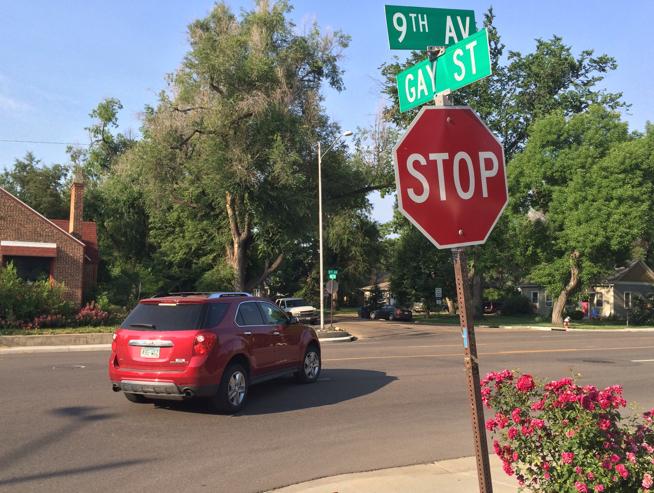
Good morning, Readers >> Here’s a column from 2018, relevant to anyone who drives through the intersection of Ninth Avenue and Gay Street in Longmont.
Good morning, Johnnie >> I have a question for you that has been bugging me for years upon years. I live on Gay Street and have always loved to tell people, “Well, you know Gay Street is not straight.” As the eyebrows raise on whomever I have just mentioned this to, they peak with questions, primarily, “What do you mean?”
I kindly point out to them that Gay Street has several crossings which are in no way straightforward. Instead, depending on your direction of travel, you must make slight or heavy turns to the right or the left and then back again to keep on your desired route. Examples are Ninth Avenue, 11th Avenue and Mountain View Ave.
Here lies the question: What is the proper procedure when traveling on this road in relation to turn signals? It sure bugs me when I sit on, say, 11th and Gay awaiting the car coming the opposite direction to turn due to his turn signals, only to find they in fact immediately change to the opposite blinker to, in my opinion, continue straight on the same road.
I’ve seen too many accidents and potential accidents here because of this. If your blinker is on, I would expect you to make a full turn onto the crossing street, not signal your blinker to go straight, but have a slight offset in your path.
Park there, watch. Its mind boggling. I feel that no turn signals are required for driving “straight on Gay.” It sends the wrong message. — Colonel Forbin
Good morning, Colonel >> I have parked there. I have watched. I’ve driven it numerous times. I’ve even answered this particular question before and learned that I was doing the turn-signal thing all wrong.
Here’s the answer, straight up.
Even though Gay Street jogs left and right, it is still Gay Street. So, if you intend to remain on Gay through the jog, then no turn signal is required. But if you intend to turn onto and remain on the cross street, then use your turn signal.
And here’s why: If another motorist, or a cyclist, isn’t sure about your intentions at the intersection, then the proper use of signals at the intersection will make it clear to them what you’ll do next — turn left, turn right, or proceed through the jog.
One aspect of the Ninth Avenue intersection is the center, multi-use lane, which motorists following the Gay Street jog enter as they navigate the intersection. When former traffic Sgt. Mike Bell helped me with this answer a few years back, he noted that since there are no arrows or signs indicating that it is a turn lane, it is lawful for Gay Street traffic to use that multi-use lane, so long as they do not interfere with any other traffic.
— Send questions to johnnie@times-call.com.


 PREVIOUS ARTICLE
PREVIOUS ARTICLE
